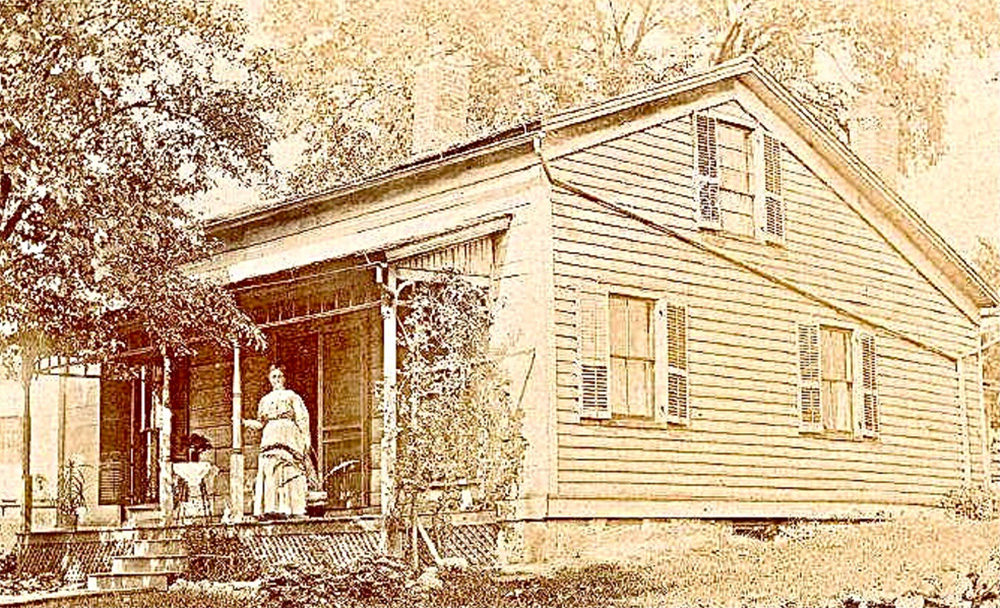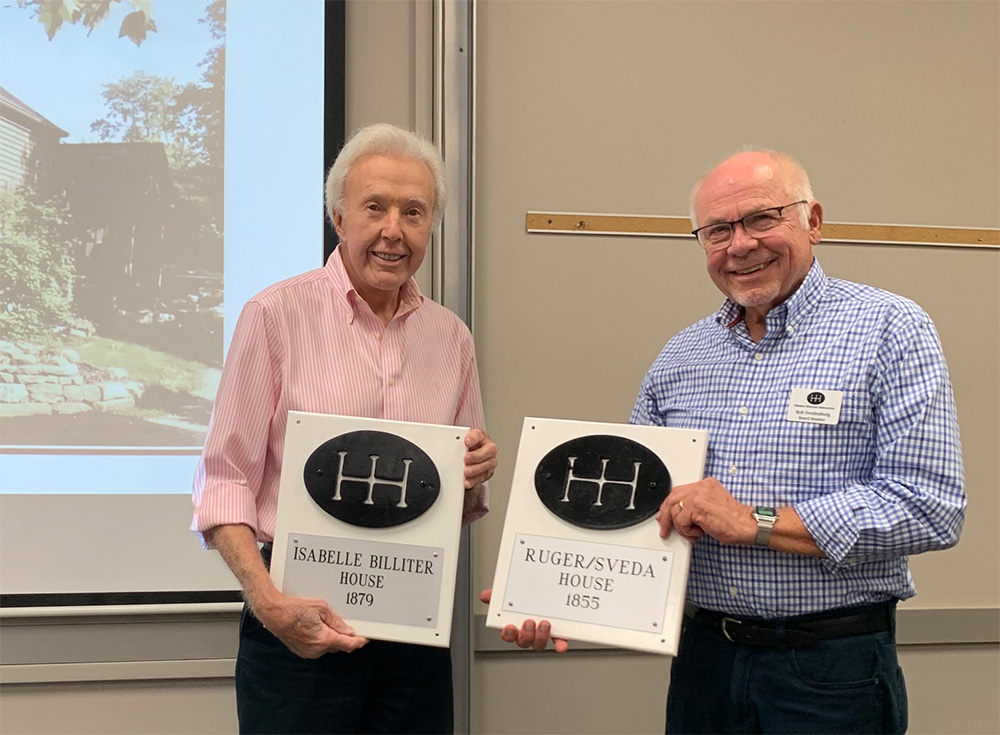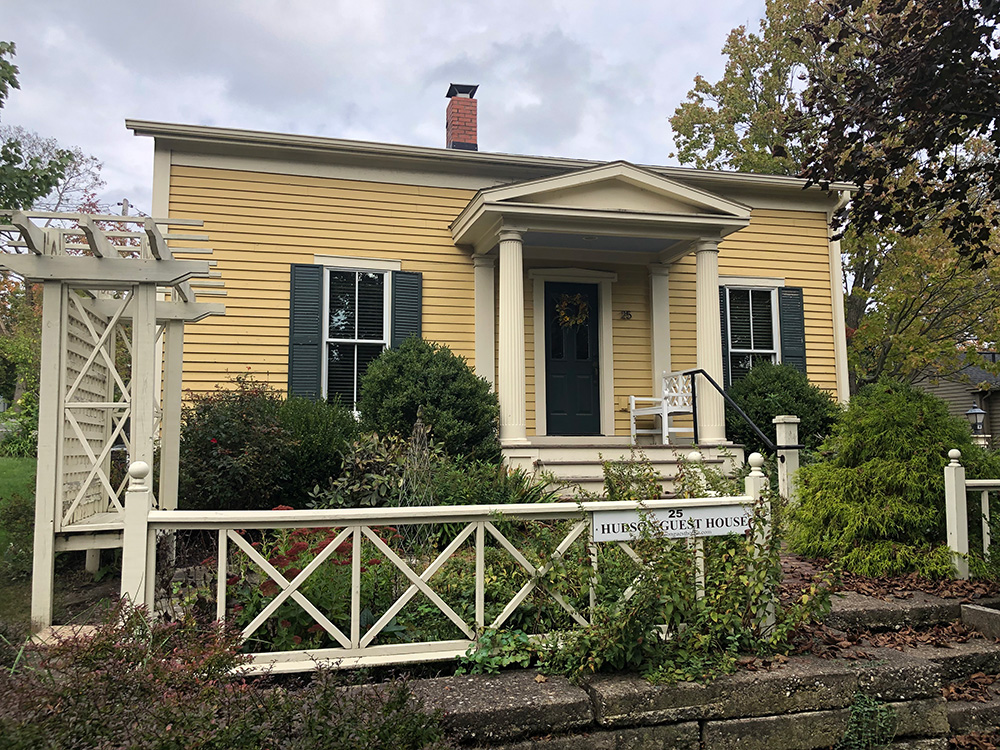Thurs, Nov 13, 7:00pm at Barlow Community Center. Dr. Megan Shaeffer discusses the history and archaeology of Wood Hollow Metro Park
Neighboring Properties Receive Markers From Hudson Heritage Association
Two Homes Restored by Allan Sveda Honored at October Meeting
Properties located at 25 and 29 East Streetsboro are the latest homes to be added to the list of more than 160 buildings recognized by Hudson Heritage Association for their historical and architectural significance. Both properties are among several in Hudson that have gained new lives after being acquired and restored by local architect and preservationist Allan Sveda.
About 25 East Streetsboro

The home at 25 East Streetsboro, which operates today as the Hudson Guest House, will be known as the Isabelle Billiter House, named for the woman who lived there for 49 years as a widow and where she raised four children. One of those children, daughter Jessie, looked after her mother and eventually inherited the home, where she lived for the rest of her life. Together, the mother and daughter lived in the house for 90 years. The house is believed to have once been a wing of the home located at 19 East Main Street built in 1836 for Dr. Israel Town and known today as the Johnson/Romito Funeral Home. In 1877, a new owner remodeled the house on East Main and removed the wings. One of the wings was purchased and moved to its location on East Streetsboro, where it was eventually bought by Isabelle and converted in 1879 into the house that stands today.
Following Jessie Billiter’s death, the property passed through the hands of several short-term owners. By 2013, it had been abandoned for four years, stripped by vandals, and become a tear down. Allan Sveda purchased the property from the bank and set about saving the structure from demolition. The home won an award for best restoration in 2016 from the Summit County Historical Society and Progress Through Preservation.
About 29 East Streetsboro
Built in 1855 by local investor and developer F. W. Bunnell, the home located at 29 East Streetsboro was soon sold to Albert Rugar, a stone mason, and his wife Charlotte. Mr. Rugar was also a Civil War veteran who became well-known for the panoramic drawings of two Civil War camps in Ohio and later for a famous drawing of the Lincoln funeral train travelling through Columbus. He subsequently became one of the first and most foremost artists known for panoramic views of American cities. These poster-size drawings are often called “bird’s-eye views” and have become an important historical record of cities and towns from that time. Today, they are often displayed as decorative art. The Library of Congress has most of Rugar’s original works.
After the Rugars, the property passed through two more hands before becoming a rental, including serving as the parsonage for the old St. Mary’s Church, now known as the Church on the Green. The house was sold again in 1917 and then again in 1940 to two individuals with connections to Hudson’s railroad. The second of these owners, Concezio Piccolino, his wife and their heirs lived in the home for 63 years. In 2013, this house was also purchased by Allan Sveda, who restored it before making it his own personal residence. The property has been named the Albert Rugar/Allan Sveda House.
About Allan Sveda
A graduate of Kent State University’s School of Architecture, Mr. Sveda began his work restoring Hudson buildings in 1978. After retirement, he continued to buy and restore properties in the community. During his career, he has renovated the Brewster Mansion, the Hannaford Chrysler Plymouth Motors property on West Streetsboro, the Evaporator Works, the Sebastian Miller house on East Main, as well as the first three homes east of the Church on the Green on East Streetsboro Street, and many others.
Mr. Sveda will accept markers for both properties at the Hudson Heritage Association general meeting to be held Thursday, October 14 at the Barlow Community Center. The meeting, which is free and open to the public, will begin at 7:30 p.m.

Hudson Heritage Association established its program to award markers to historic properties in the community in 1973. Having a marker indicates the building has been researched to document its history, notable elements of its architecture and details about its ownership and occupants. More information about the requirements for an HHA marker and guidance about conducting the research required can be found on our Research & History page. Information about the homes that have HHA markers can be found at the “Find a Property” section of the HHA website, where visitors can search by street, property name, age or other categories. Go to our Find A Property page for more details.

